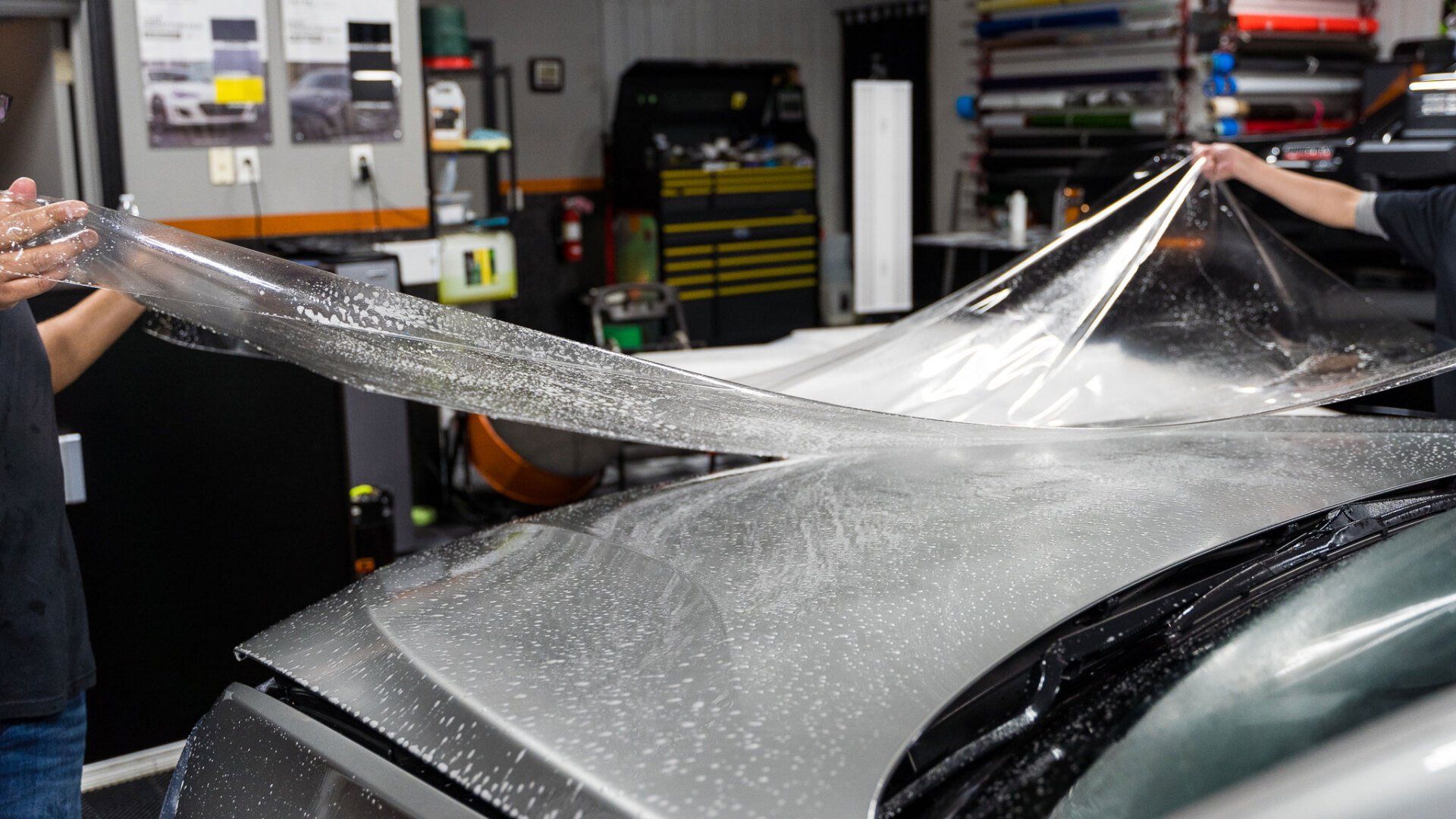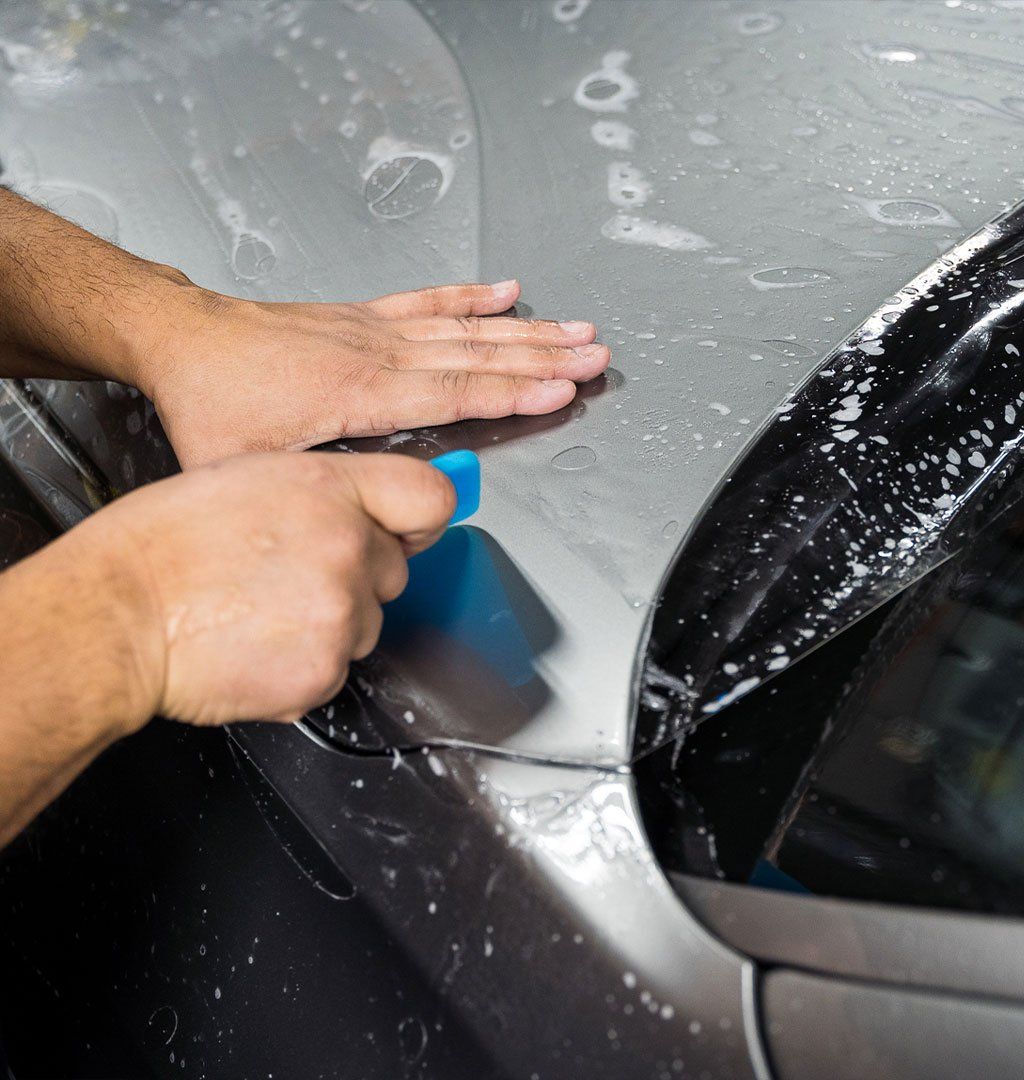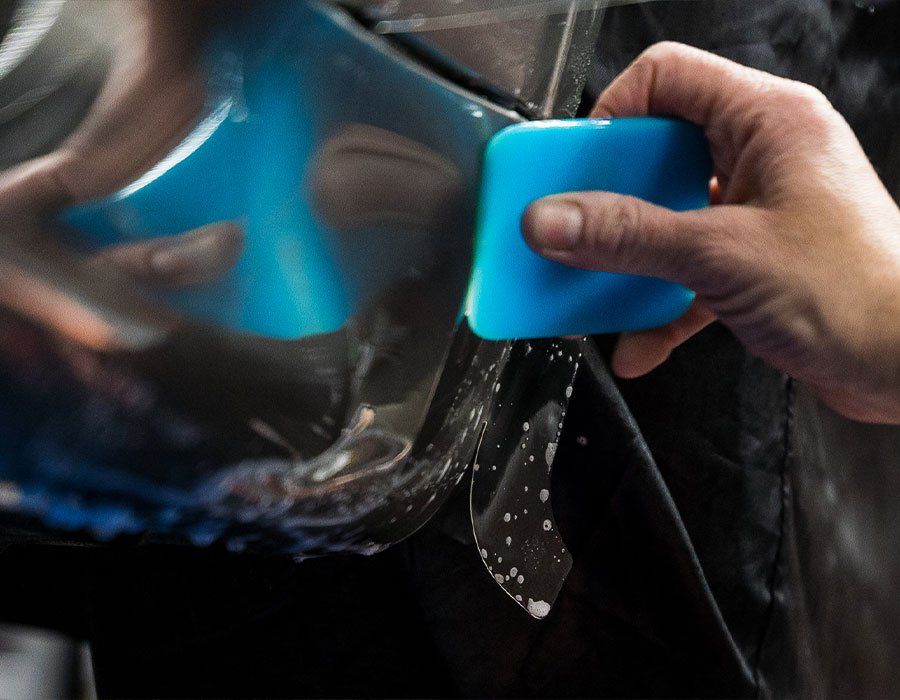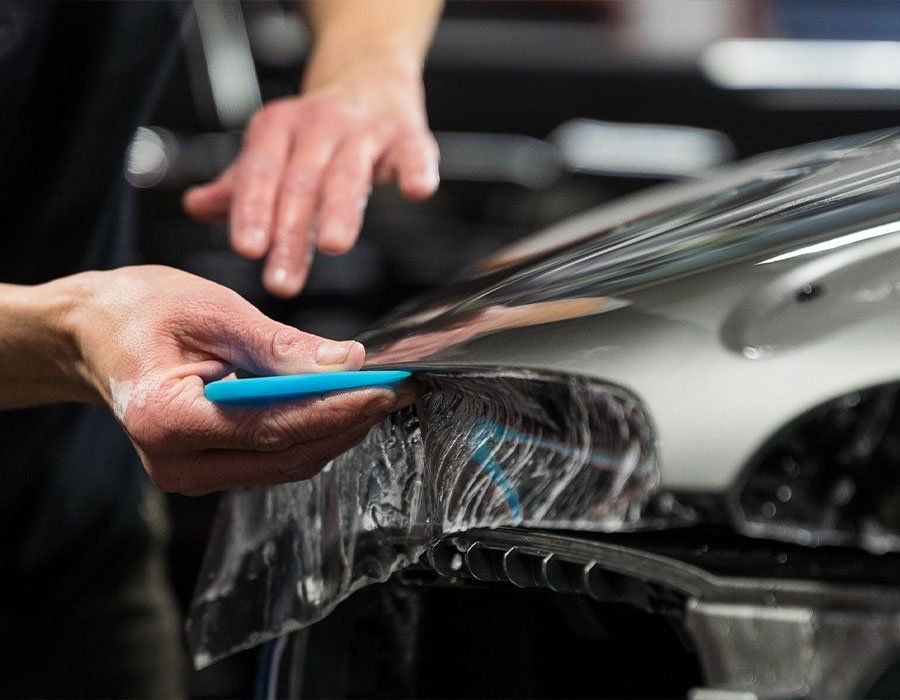Protect Your Vehicle: The Best High-Impact Zones for PPF Application
CALL (708) 574-8496
GET A FREE ESTIMATEWhen it comes to keeping your vehicle looking sharp and new, paint protection can often feel like an afterthought. However, consider the accumulation of minor dents, scratches, and chips from regular use. Many drivers don’t realize that their car’s exterior is at constant risk from things like road debris or parking lot mishaps. Paint protection film offers a practical way to guard against this everyday wear and tear, acting as a shield for the most vulnerable areas of your vehicle.
The best high-impact zones to protect with paint protection film include the front bumper, hood, fenders, and side mirrors, as these areas are most susceptible to damage from road debris and chips. Additionally, protecting the leading edges of doors and the rear of side skirts can further enhance your vehicle's defenses against scratches and wear.
Front Bumper and Hood Protection
The front bumper and hood are often the first battlegrounds against relentless road debris. Each day spent driving exposes these areas to countless tiny stones, gravel, and even pesky bugs that can leave permanent marks and damage. If you've ever taken a long road trip, you know that those seemingly insignificant pebbles being tossed up from the car in front have the potential to create scratches or dents that accumulate over time, leading to costly repairs. This area is where paint protection film shines. When applied to high-impact zones like the front bumper and hood, PPF acts as a nearly invisible shield. Unlike traditional paints that are prone to chipping and scratches, PPF offers robust protection while preserving the sleek appearance of your car. Covering these crucial areas with PPF can make a significant difference for drivers who frequently drive on highways, as it can prevent minor cosmetic damage and maintain your car's brand-new appearance for years to come.
It's worth noting that around 30% of all collision repairs involve front bumpers—this figure alone highlights how susceptible these areas are to damage. Moreover, studies reveal that 70% of hood damage comes directly from road debris impact, emphasizing the need for preventive measures like PPF. Opting for professional installation of PPF for your front bumper and hood typically costs between $500 and $1,200, depending on various factors, including location and film quality. While it may require an upfront investment, consider it a cost-effective way to preserve your vehicle's aesthetics and integrity in the long run. Investing in PPF not only protects your paint but also lessens future cleaning efforts, since dirt and sap can be easily wiped away without damaging the underlying surface. By proactively protecting these high-impact zones, you set yourself up for success in maintaining your vehicle's appeal and longevity while preparing for further protective measures for additional vulnerable spots.
Fenders and Side Mirrors Defense
Fenders and side mirrors deserve a spotlight when discussing paint protection film, as they are some of the most vulnerable areas on your vehicle. Their strategic positioning makes them prime targets for various forms of damage. If you've ever parked in a tight spot only to hear the unfortunate thud of a stray shopping cart or felt the jolt of a pebble ricocheting off your car while driving, you understand all too well the risks these parts face daily. The statistics back this up: studies show that fenders can sustain up to 30% of impact damage from road debris, while approximately 20% of vehicle accidents involve side mirror damage. This reality necessitates the protection of these areas to maintain both aesthetics and functionality.
Cost-Effectiveness of PPF in These Areas
Repairing damaged components such as side mirrors can cost between $200 and $600, depending on the extent of the damage. Imagine realizing you need a replacement after that unexpected encounter with a rogue branch or when the fender experiences scratches from urban hustle. Investing in PPF application, typically priced around $100 to $150 per mirror, is not merely a precaution; it’s a smart strategy that pays off in the long run. In addition to monetary savings, many car owners find that protecting these smaller yet significant areas keeps their vehicle looking sharp and prevents minor dings from spiraling into more extensive repairs. The psychological comfort of knowing your car is well guarded against everyday mishaps adds an extra layer of satisfaction every time you slide behind the wheel.
While some may underestimate these smaller regions, their importance goes beyond initial perceptions. Providing PPF coverage not only safeguards individual fenders and side mirrors but also enhances your car's overall appeal. After all, people often notice the minor details. A well-maintained appearance contributes significantly to resale value, especially for enthusiasts who pay close attention to minutiae when evaluating vehicles. So, protecting these areas is wise for both daily drivers and those who value their cars' aesthetics. Taking the time to invest in PPF for fenders and side mirrors isn't simply about avoiding repair costs; it's about prolonging the life of your vehicle while keeping it visually appealing—a dual benefit no car owner should overlook.
Door Edges and Handles Safety
Door edges and handles are some of the most frequently utilized parts of any vehicle. Unfortunately, they also fall victim to a range of everyday mishaps that can lead to unsightly scratches and chips. The constant opening and closing of car doors, along with the jostling caused by items like keys and bags, present significant risks to these vulnerable spots on your car. Just picture it: every time you open your door, there lies an opportunity for damage. However, there's hope—paint protection film can significantly contribute to preserving your car's original appearance.
How PPF Enhances Durability
By applying PPF to door edges and handles, you create a robust shield against potential damage. This clear barrier can effectively prevent scratches from keys or rings as well as dings from bags and other objects that may be brushed against the surface. Plus, its thickness—which typically ranges from 8 to 12 mils—acts as a substantial buffer against impacts and abrasions. Implementing PPF around these high-contact zones does more than just prolong your vehicle’s pristine appearance; it provides peace of mind for everyday use. Having that extra layer of protection is crucial, whether you're rushing into the grocery store or helping friends load their gear. The cost of applying PPF can often be outweighed by avoiding potential repairs and maintaining resale value over time.
Rear Bumper and Trunk Areas
The rear bumper and trunk area serve as frontline defenses against wear and tear caused by daily use, particularly when loading and unloading cargo. Think about it: whether you're tossing in groceries, sports gear, or luggage, that glossy surface is constantly at risk for scratches and scuffs. This is where paint protection film offers an invaluable layer of defense, safeguarding your car’s aesthetic appeal and extending its lifespan. When you're lifting heavy items into your trunk, you might inadvertently bump or scrape the bumper. Such abrasions can lead to significant paint damage—something you'd rather avoid. Many car owners underestimate this risk or only notice the damage when it's too late. With PPF in place, these potential mishaps don’t have to be a source of anxiety; the film acts as a resilient barrier, absorbing impacts that could otherwise mar your vehicle's finish.
It's also worth noting that without PPF, the cost to repaint or repair that rear bumper can easily range from $500 to $1,000. In contrast, investing approximately $300 to apply PPF is a small price to pay for peace of mind and paint preservation. If you own a vehicle brand known for its pristine appearance or plan on reselling it in the future, maintaining that showroom shine becomes essential. For many enthusiasts and everyday drivers alike, this simple installation isn’t just an afterthought—it's a proactive measure that underscores the long-term value of their vehicle.
Roof and Pillars Shielding
Although it might not seem like an immediate concern, the roof and pillars of your vehicle sustain damage from various elements such as weather conditions and falling debris. Many car owners underestimate the amount of wear and tear these areas can undergo. For instance, think about those rainy days where water pools on the roof or the sunshine that fades paint over time. Each of these factors contributes to long-term deterioration, which can lead to expensive repairs down the line. Some argue it's unnecessary to apply paint protection film to the roof and pillars, believing these areas don't experience much damage. However, they overlook the gradual effects these elements can have—not just aesthetically but also structurally—leading to costly issues in the future if left unprotected.
The Protective Role of PPF
PPF protects your vehicle's paint from harsh sunlight, tree sap, and bird droppings, which can cause long-term damage if left unchecked. Imagine taking a road trip under the hot summer sun; without PPF, such exposure can significantly fade your paint job. The film acts as a barrier, absorbing shocks from small impacts while reflecting harmful rays and preventing oxidation. Users frequently report that their vehicles show far less wear after applying PPF; it's like giving your car an invisible suit of armor that works tirelessly to keep it looking its best.
Cost-Benefit Analysis
Applying PPF to the roof and pillars can cost around $400. While this may seem like an upfront expenditure, consider the alternative. Restoration procedures like roof repair or repainting can easily run up to $2000. When you weigh the costs, investing in PPF becomes a wise decision for maintaining your vehicle’s overall health and appearance. It’s not just about protecting against immediate impacts; it’s about preserving the value of your car for years to come. For those who park their vehicle outside frequently, applying PPF to these high-exposure areas provides an extra layer of peace of mind. You may not see the results right away, but over time, you will appreciate how this small investment protects your vehicle from unintentional damage.
Maintenance and Longevity of PPF Applications
A commitment to regular upkeep is pivotal for maximizing the lifespan of your paint protection film. Imagine protecting your investment with a shield that can last between 7 and 10 years. This potential longevity hinges not only on the quality of the film you choose but also on how well you maintain it. Imagine it like taking care of a delicate flower; without adequate watering and sunlight, the bloom, no matter how exquisite, will eventually wilt.
Steps to Maintain PPF
- Regular Washing: Keeping your vehicle clean is step number one. Use pH-balanced car shampoos that are gentle on both the paint and the film. Regular washing helps prevent dirt and residues from accumulating, which can lead to degradation over time. It's akin to brushing your teeth; a consistent approach leads to healthier outcomes.
- Avoiding Harsh Chemicals: Treat your PPF like you would safeguard your skin from harsh sun rays—avoid subjecting it to damaging conditions. Never use abrasive or solvent-based cleaners like gasoline, as these can break down the protective properties of the film and leave your paint susceptible to damage.
- Routine Checks: Just as you would inspect a home appliance for wear and tear, it's crucial to routinely check the edges of your PPF for any lifting or bubbles forming. Catching these imperfections early prevents larger issues down the line, much like addressing a small leak before it turns into a flood.
Engaging in a proactive maintenance regimen pays off significantly in protecting your vehicle's aesthetic appeal. By adhering to these steps, you're ensuring that the PPF continues its duty of safeguarding against not just scratches and chips, but also against harmful environmental elements, allowing you to enjoy your vehicle while retaining its showroom quality for years. After all, maintaining that fresh-off-the-lot look goes beyond just aesthetics—it’s an investment in long-term protection and value retention for your cherished ride.
In summary, prioritizing maintenance enhances the durability of your PPF and safeguards the overall integrity of your investment, making every drive a pleasure. Protecting your vehicle has never been more essential in today's fast-paced automotive landscape.
Leading PPF Installers in Carol Stream, IL
Defend your vehicle against chips, stains, and daily wear with professional paint protection film installation from D’Andrea Auto Detailing in Carol Stream, IL. Our high-performance PPF acts as an invisible barrier, shielding your paint from road debris, bug splatter, and environmental damage while maintaining a flawless finish. Whether you're protecting a brand-new car or preserving a cherished ride, our skilled team ensures precision application for long-lasting results. Schedule your PPF service today and drive with confidence, knowing your paint is protected by the best!





